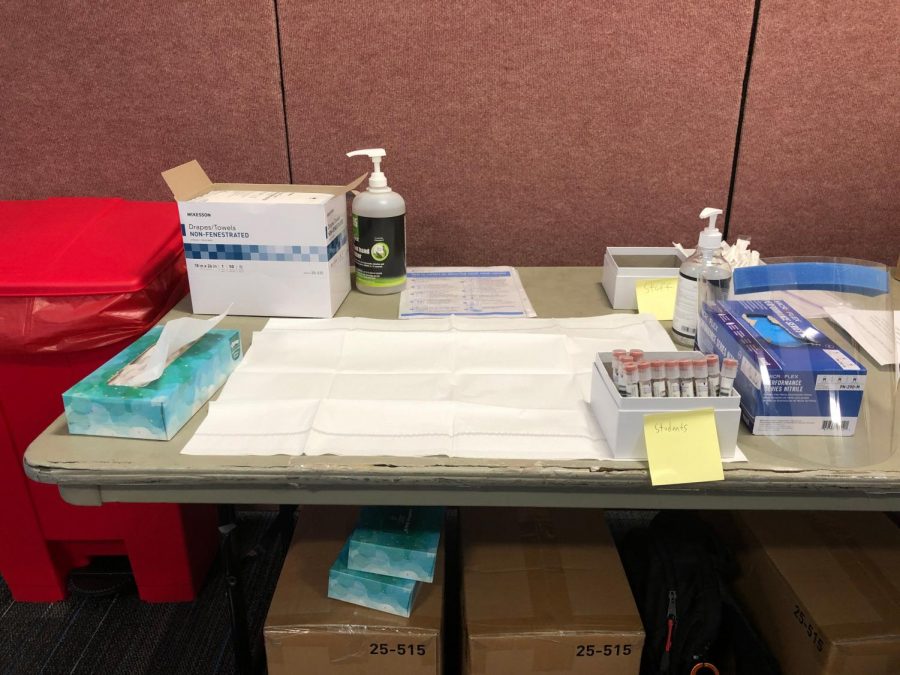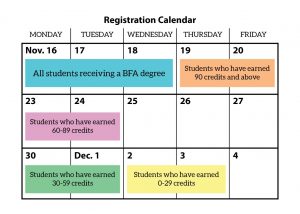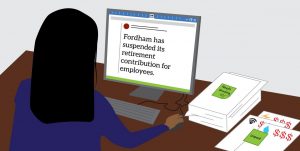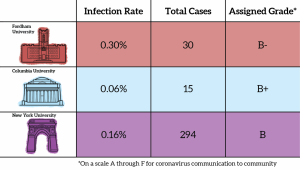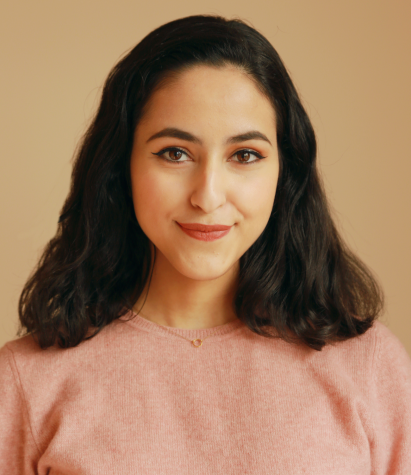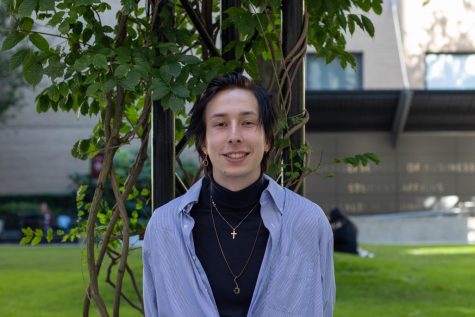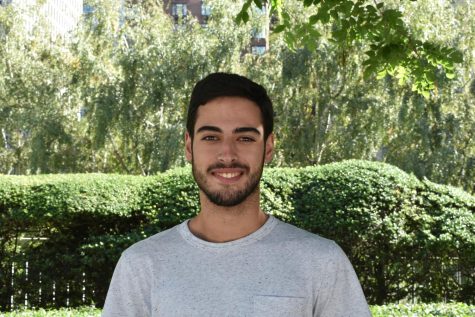Coronavirus Cases Are Rising Again in NYC –– What Does This Mean for Fordham?
Fordham’s positive COVID-19 test rate is above 1% for the first time this semester
Just before students return home for Thanksgiving break, the university’s total infection rate has passed 1% for the first time. There are 67 cases between Rose Hill and Lincoln Center as of Nov. 21.
November 21, 2020
As Fordham students prepare to travel home for Thanksgiving break, coronavirus cases at the Lincoln Center and Rose Hill campuses and in New York City are rising. According to an update from the Office of the President on Nov. 13, the university’s positive COVID-19 test rate is above 1% for the first time this semester.
Fordham’s COVID-19 Testing Data page states that as of Nov. 21, there are 11 positive results at Lincoln Center and 56 positive results at Rose Hill. Based on the 14-day summary, the university’s total infection rate currently stands at 1.35%.
If a campus reaches the threshold of 100 cases in a two-week period, all on-campus instruction and face-to-face activities would be suspended.
Fordham’s infection rate correlates with the recent increase of cases, hospitalizations and deaths in New York City — reaching levels that have not been seen in the city since June.
“I would give anything to be back in the city, but I just don’t think that it is possible to completely ensure the safety of all students in-person.” Ky Hayward, FCLC ’21
According to the university’s COVID-19 guidelines, if one person in a classroom tests positive, New York City requires that everyone physically present in the class has to quarantine for 14 days.
The need for a quarantine period depends on the size of the classroom and the duration of the course. Eva Gelman, Fordham College at Lincoln Center (FCLC) ’24, found herself in a quarantine-dedicated suite on the 21st floor of McKeon Hall.
After attending her Invitation to Theatre course on Nov. 9, Gelman received a call the following day from Fordham Public Safety informing her that a student in her class tested positive for COVID-19. Her quarantine began that same day.
Fordham provided Gelman with an empty suite and food delivered to her door every day, but she said she doesn’t feel that there is enough surveillance of quarantined students.
“What I find funny is that we’re not actually being observed. Nobody is actually making sure that we don’t leave our room,” she said. “We’re allowed to leave to get tested, so I can see so many possible ways for someone to violate quarantine. ”
Despite this, Gelman remains assured of her own compliance with quarantine guidelines and is looking forward to leaving for Thanksgiving break on Nov. 23. Since beginning quarantine, she has tested negative twice. Gelman plans to return to campus again for the spring semester.
Another student, Ky Hayward, FCLC ’21, who is not on campus this semester, had to quarantine after a waiter at their workplace in Massachusetts tested positive for COVID-19. While they would like to return to Fordham for the spring semester, they do not feel assured of their own safety or the safety of the Fordham community.
“I know that not being on campus presents all sorts of challenges for students from different backgrounds, especially low-income students, queer students, and students with disabilities,” Hayward said. “I would give anything to be back in the city, but I just don’t think that it is possible to completely ensure the safety of all students in-person.”
Faculty members at Fordham have also been asked to quarantine following positive test results in their classrooms. Bruce Berg, a political science professor at Rose Hill, quarantined in his Manhattan apartment after one of his students tested positive in October. He is now teaching this section of the course exclusively over Zoom.
Given that he taught in a physical classroom this semester, Berg has experienced teaching with new COVID-19 regulations for a few months and stated that he would like to continue doing so for the spring semester. He believes that both the Fordham administration and students have done a “very credible job.”
“The fact that we made it through the entire semester as planned is a credit to the students, who are really driving this. I think everyone’s done a very good job,” he said.
“Do I enjoy teaching in front of a computer screen? No, but I enjoy protecting my life, my coworkers’ lives, and my students’ lives more.” Maria Garcia, Fordham parent
With less than a week until students are sent home for the next few months, Fordham has continued to operate both in-person and online during the pandemic. The same cannot be said for New York City public schools.
On Nov. 19, New York City’s public schools system closed after the city reached a 3% positivity rate over the last week. Despite concerns that a second wave of the coronavirus could surge through New York City this winter, bars, gyms and restaurants remain open.
Maria Garcia, a Fordham parent, teaches first graders at P.S. 314, the Muscota New School. She said that schools shouldn’t have been opened to begin with.
“Do I enjoy teaching in front of a computer screen? No, but I enjoy protecting my life, my coworkers’ lives, and my students’ lives more,” she said.
The New York City public school system was the only major school district in the U.S. to attempt in-person learning for the 2020-21 academic year, yet there was trouble from the beginning, when start dates were delayed and phased reopenings were implemented.
Garcia said she anticipates that the rest of the school year will be online.
“My job definitely becomes harder,” she said. “Four- and five-year-olds love to talk and move around, so it is difficult for me to not manage their needs directly.” Garcia said she expects to have more daily meetings, conversations with parents and lesson plan adjustments while teaching online.
In comparison with the closure of all public schools in the city, the Archdiocese of New York announced that Catholic schools in the region will remain open until they deem the decision “unsafe.”
Garcia said if public schools are closing, Catholic schools should terminate in-person operations as well. “It’s all a mess. We, the workers, and students are going to be dealing with it.”
“Health services is following protocols and all individuals on campus have an individual responsibility during this crisis.” Maureen Keown, director of University Health Services
The brunt of essential work has fallen on the workers and families who are unable to leave, disproportionately impacting Black and brown people. In the last eight months of the pandemic, more than 300,000 people have fled New York City.
Maureen Keown, director of University Health Services, said that the department is not concerned with students traveling home for Thanksgiving. Students will not return to campus to finish the fall semester, and the spring semester is not expected to commence until Feb. 1.
“Health services is following protocols and all individuals on campus have an individual responsibility during this crisis. Cases are rising everywhere so the guidance put forth by the experts needs to be followed,” she stated.
This week, the university will announce procedures for COVID-19 testing, building closures and employees who are remaining on campus for the winter break and month of January. Keown affirmed that Fordham and University Health Services will have a plan in place prior to students returning to the university in the spring.

